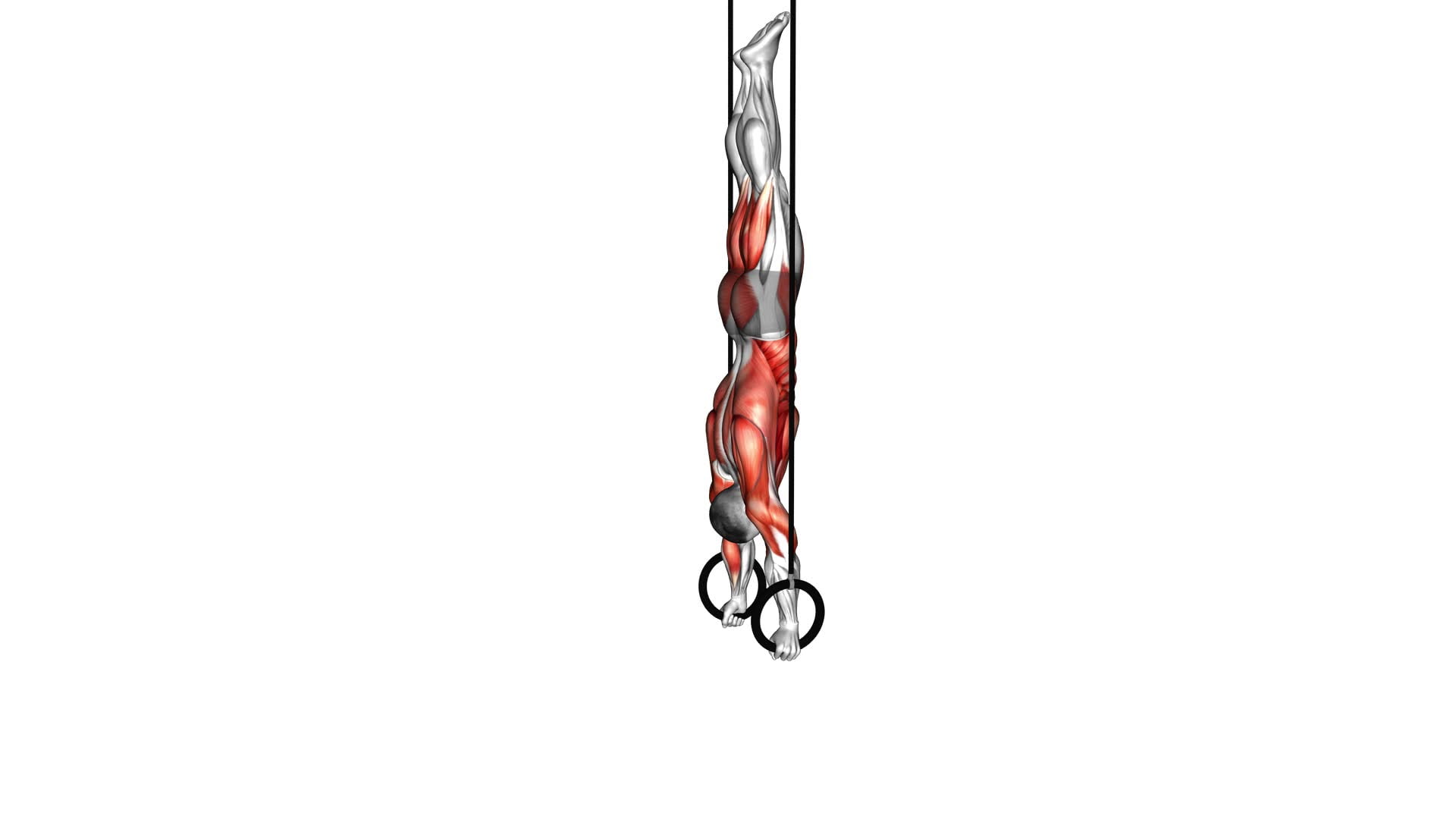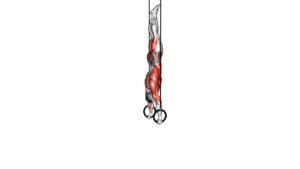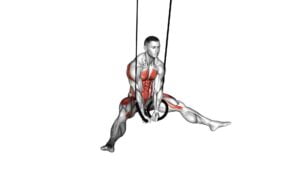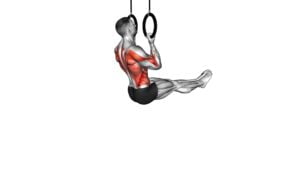Ring Handstand to L Sit (male) – Video Exercise Guide & Tips

Are you ready to take your upper body strength and balance to the next level? In this video exercise guide, we'll show you how to master the ring handstand to L sit.
Watch This Exercise Video
You'll learn the equipment you'll need, the proper form and technique for each move, as well as tips for progressing and avoiding common mistakes.
Get ready to challenge yourself and achieve impressive results with this dynamic exercise combo.
Let's get started!
Key Takeaways
- Rings are essential for executing the exercise safely and effectively
- Ring handstand progressions build strength and stability in core, shoulders, and arms
- Ring handstand improves shoulder stability and mobility, preventing injuries and improving shoulder health
- Practice controlled descents to develop strength and control
Equipment Needed for the Ring Handstand to L Sit
To perform the Ring Handstand to L Sit, you'll need a set of rings. These rings are essential for executing the exercise safely and effectively. Ring handstand progressions involve a series of exercises that gradually build strength and stability in your core, shoulders, and arms. The use of rings adds an extra challenge to traditional handstands, as they require more control and balance.
One of the main benefits of the ring handstand is its ability to develop upper body strength. The instability of the rings forces your muscles to work harder to maintain balance, resulting in increased muscle activation and growth. Additionally, the ring handstand improves shoulder stability and mobility, helping to prevent injuries and improve overall shoulder health.
Proper form and technique for the ring handstand are crucial to maximize the benefits and minimize the risk of injury. In the next section, we'll discuss the key elements of proper form, including hand placement, body alignment, and breathing techniques. By mastering these fundamentals, you'll be on your way to performing a perfect Ring Handstand to L Sit.
Proper Form and Technique for the Ring Handstand
To achieve proper form and technique for the Ring Handstand, focus on maintaining a strong and stable core while balancing on the rings. Proper hand placement and shoulder alignment are crucial for executing this exercise correctly.
Start by gripping the rings firmly with your hands, making sure your palms are facing downward. Position your hands slightly wider than shoulder-width apart to provide stability and support. This hand placement will allow you to distribute your weight evenly and prevent your hands from slipping.
Next, focus on aligning your shoulders properly. Keep your shoulders engaged and pulled down away from your ears. This will help to stabilize your upper body and prevent any unnecessary strain on your shoulders.
As you kick up into the handstand position, engage your core muscles to maintain balance. Keep your body straight and avoid overarching or rounding your back. Your legs should be fully extended and your toes pointed.
Throughout the exercise, maintain a steady breath and try to hold the handstand position for as long as possible. Remember to listen to your body and take breaks when needed.
Transitioning From the Ring Handstand to the L Sit
Transitioning from the Ring Handstand to the L Sit involves smoothly moving from the inverted handstand position to the seated L-shaped position on the rings. This transition requires strength, balance, and control. Here are some tips to help you progress in this exercise:
- Engage your core: Keep your abs tight throughout the movement to maintain stability and control.
- Shift your weight: Gradually shift your weight from your hands to your lower body as you lower yourself into the L Sit position.
- Bend your knees: Start by bending your knees and bringing them towards your chest. This will help you initiate the movement and maintain balance.
- Extend your legs: As you gain strength and control, work on straightening your legs to achieve the full L Sit position.
- Practice controlled descents: Start by practicing controlled descents from the handstand position to the L Sit. This will help you develop the necessary strength and control for the full transition.
Common challenges you may encounter during the Ring Handstand to L Sit progression include lack of core strength, difficulty maintaining balance, and limited flexibility. Make sure to focus on building your core strength, practicing your balance, and improving your flexibility to overcome these challenges. Remember to start with proper progressions and gradually increase the difficulty of the exercise as you become more comfortable and confident in your abilities.
Common Mistakes to Avoid During the Ring Handstand to L Sit
Avoid these common mistakes when transitioning from the Ring Handstand to the L Sit to ensure a smooth and successful movement.
One common mistake is failing to properly warm up and stretch before attempting this exercise. It's important to prepare your muscles and joints for the demands of the movement to prevent injuries.
Another mistake is rushing through the progressions and not mastering each step before moving on to the next. Take your time to build strength and stability in each position before progressing.
Poor form is another common mistake. Make sure to maintain a straight body line and engage your core throughout the movement.
Lastly, neglecting modifications is a mistake that can hinder your progress. If you're struggling with the full movement, try using support or scaling the exercise to make it more achievable.
By avoiding these common mistakes and focusing on proper form and progression, you can improve your ability to perform the Ring Handstand to L Sit.
Now, let's move on to some tips for progressing and mastering this challenging exercise.
Tips for Progressing and Mastering the Ring Handstand to L Sit
To effectively progress and master the Ring Handstand to L Sit, you should focus on building strength and stability in each position and gradually increasing the difficulty of the exercise. Here are some tips to help you along the way:
- Use progression techniques: Start by practicing the handstand and L Sit separately before attempting the Ring Handstand to L Sit. This will allow you to develop the necessary strength and body control in each position.
- Strengthen your core: Core strength is essential for maintaining balance and control during the Ring Handstand to L Sit. Incorporate exercises such as planks, hollow holds, and leg raises into your training routine to build a solid foundation.
- Practice good form: Pay attention to your body alignment and engage your core muscles to maintain stability. Keep your shoulders, hips, and legs in line and avoid any sagging or arching.
- Gradually increase difficulty: Once you have mastered the basic Ring Handstand to L Sit, challenge yourself by adding variations such as tuck or straddle positions. This will further strengthen your core and improve your overall control.
- Be patient and consistent: Progressing to the Ring Handstand to L Sit takes time and dedication. Practice regularly and listen to your body, allowing for proper rest and recovery.
Frequently Asked Questions
How Long Does It Typically Take to Progress From a Regular Handstand to a Ring Handstand?
To progress from a regular handstand to a ring handstand, the timeline varies depending on your skill level and dedication. However, there are a few common mistakes to avoid during the transition.
Focus on building strength and stability in your shoulders and core. Take it slow and gradually introduce the rings into your handstand practice.
Practice regularly and be patient with yourself. With consistent effort, you'll be able to master the ring handstand in due time.
Can This Exercise Be Modified for Beginners or Those With Limited Upper Body Strength?
Modifications for beginners and those with limited upper body strength are available for this exercise. You can start by practicing regular handstands against a wall to build strength and stability.
Once you feel comfortable, you can progress to using rings. To modify, you can use a resistance band for assistance or place your feet on a box to decrease the difficulty.
Keep practicing and gradually increase the challenge as you get stronger.
Are There Any Specific Warm-Up Exercises or Stretches That Should Be Done Before Attempting the Ring Handstand to L Sit?
Before attempting the ring handstand to L sit, it's important to warm up your body and stretch properly. Start with a dynamic warm-up, such as arm circles and shoulder rotations, to increase blood flow and loosen up your muscles.
Then, focus on stretching exercises that target your shoulders, wrists, and hamstrings to improve flexibility and prevent injuries.
Remember to listen to your body and only progress to the ring handstand to L sit when you feel adequately warmed up and stretched.
What Muscles Does the Ring Handstand to L Sit Primarily Target?
The ring handstand to L sit primarily targets your core muscles, including your abs and hip flexors. This exercise requires strong shoulder and arm muscles to support your body weight in the handstand position.
The L sit engages your lower abs and hip flexors even more as you lift your legs off the ground.
It's important to note that there are variations and progressions of this exercise to challenge your muscles further and continue building strength.
Are There Any Alternative Exercises That Can Help Improve Stability and Strength for the Ring Handstand to L Sit?
To improve stability and strength for the ring handstand to L sit, there are alternative exercises you can try.
Focus on exercises that target your core, such as plank variations and hollow body holds. These exercises will help build the necessary stability and strength for the ring handstand to L sit.
Additionally, incorporating exercises that improve shoulder and upper body strength, like push-ups and dips, can also be beneficial.
Remember to always maintain proper form and gradually increase the difficulty of the exercises.
Conclusion
In conclusion, mastering the ring handstand to L sit requires proper form, technique, and patience.
By using the appropriate equipment and avoiding common mistakes, you can progress and achieve this challenging exercise.
Remember to focus on maintaining balance and control throughout the transition.
With practice and dedication, you can successfully execute the ring handstand to L sit and enhance your overall strength and stability.

Author
Years ago, the spark of my life’s passion ignited in my mind the moment I stepped into the local gym for the first time. The inaugural bead of perspiration, the initial endeavor, the very first surge of endorphins, and a sense of pride that washed over me post-workout marked the beginning of my deep-seated interest in strength sports, fitness, and sports nutrition. This very curiosity blossomed rapidly into a profound fascination, propelling me to earn a Master’s degree in Physical Education from the Academy of Physical Education in Krakow, followed by a Sports Manager diploma from the Jagiellonian University. My journey of growth led me to gain more specialized qualifications, such as being a certified personal trainer with a focus on sports dietetics, a lifeguard, and an instructor for wellness and corrective gymnastics. Theoretical knowledge paired seamlessly with practical experience, reinforcing my belief that the transformation of individuals under my guidance was also a reflection of my personal growth. This belief holds true even today. Each day, I strive to push the boundaries and explore new realms. These realms gently elevate me to greater heights. The unique combination of passion for my field and the continuous quest for growth fuels my drive to break new ground.







